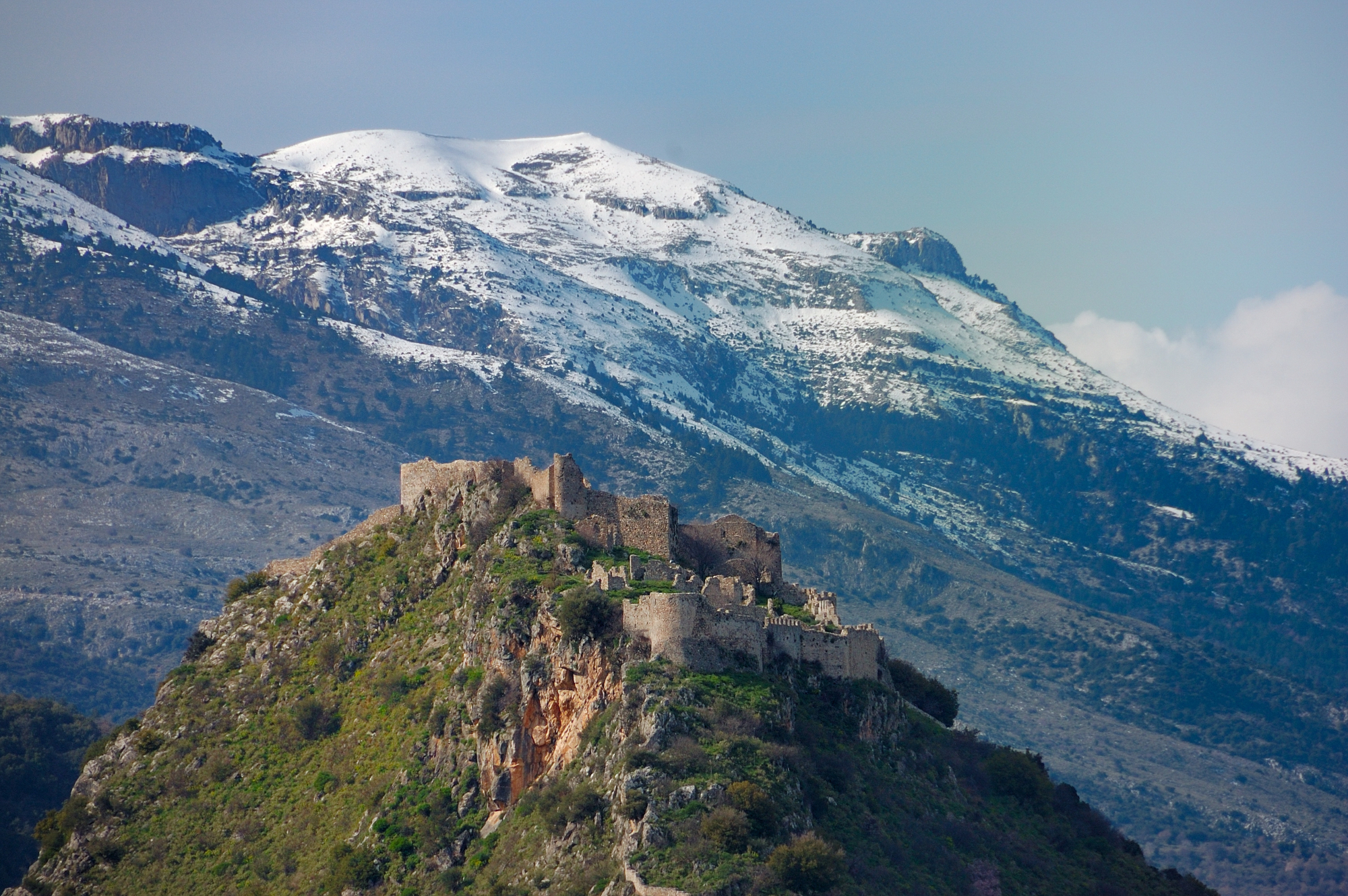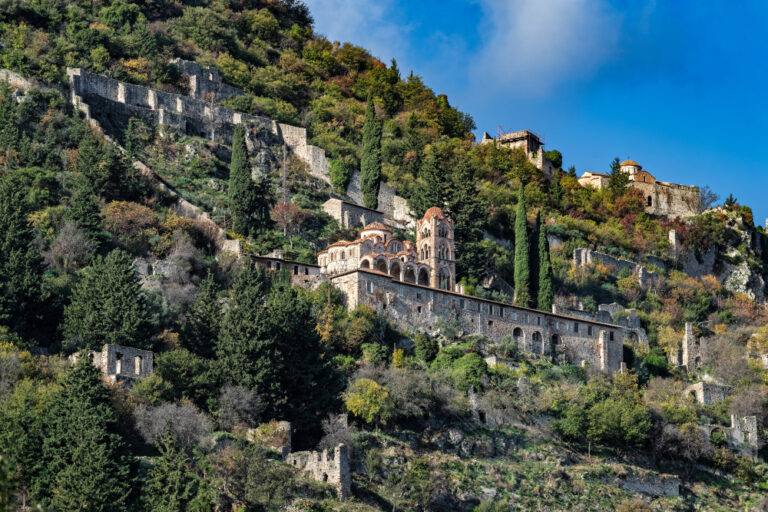Mount Taygetos is the tallest mountain in the Peloponnese at a height of 2,405 m. Its summit is Agiolias or Profitis Ilias and it is named after the stone-built chapel that is found there and where almost every year a mass is held in the honour of Profitis Ilias.
The lower part of Taygetos is mostly covered in scrub and bushes, but as the altitude gets higher the landscape becomes more wooded and the pistacia trees and blackthorns make way for firs, cedars and black pines up to the 2,000 m. snowline.
From there on the landscape is alpine with grey stone, rocks and low vegetation. The beauty of Taygetos is wilder than that of the neighbouring Parnon, with many gorges and canyons, such as Rintomos, Koskaraka, Viros and Lagada, while beautiful villages perch on its steep slopes and rutted trails cross it. Reaching the summit is not an easy feat; you need to be fit and suitably equipped, and it is best to climb with a guide who knows the difficult parts of this beautiful climbing trail.
Mystras
The first area to visit is the simply stunning tower-town of Mystras, one of the most important and well preserved late Byzantine towns.
In 1204, after the 4th Crusade, the Peloponnese was given to the Franks, and specifically to the Villehardouin family who founded the Principality of Achaia and later built the castle of Myzitrhas on top of the homonymous, strategically located hill. When a Frankish prince was caught prisoner during the Battle of Pelagonia, the Byzantine Emperor asked for the castles of Monemvasia, Mani and Myzithras in return to release him. Through the ages, the fortified location attracted many residents of the wider area. The medieval castle, palaces, monasteries and beautiful churches such as Agios Dimitrios, built in 1270, Pantanassa built in 1428, and Perivleptos built in the late 14th century are inside the fortified settlement and affirm Mystras evolving into the most important urban centre of the area.
Longanikos
Longanikos is one of the most beautiful villages of Mount Taygetos. At an altitude of 770 m., its history is long and dates back to the Late Bronze Period as the ancient ruins found in the area attest, while its Byzantine tradition is equally strong; despite its size it has seven Byzantine churches such as Agios Georgios, built in 1374, and the church of Analipsi with its Towerhouse half in ruins next to it. On a steep hill within the village a small remnant of a castle remains, probably built in Byzantine times by the Despotate of Mystras between the 13th and 14th centuries. Another theory claims that it used to belong to the Franks and then passed into the hands of the Byzantines. Whichever the case, it is an important hallmark of Longanikos that illustrates its long line of history. Stone-built houses, fountains and watermills, backed by strawberry trees, black pines, soaring firs, and beautiful views are typical of the village.
Arna
Arna is a small village in the foothills of Taygetos at a height of 700 m., surrounded by lush forests of apple, chestnut and walnut trees. The old plane tree in the square has stood tall for centuries now and has been witness to festivals ending at the break of dawn, and countless celebrations with dancing and singing. The running waters, the beautiful stone houses, and the small coffee shops create a lovely stage set that is worth visiting. There is a marked trail (E4) that crosses the village and leads to the forest of Vasiliki, with tall fir tree ringed cliffs, and the small chapel of Agios Dimitrios at an altitude of 1490 m., while on the way there are bridges, watermills and wild nature.
Parori – Panagia Zagouna – Faneromeni Monastery
The path from the village of Parori towards the Faneromeni monastery is a scenic one. Parori is just outside Sparta and the road there is good. The trail that starts in the village is cobbled, and relatively steep but it is generally easy, well marked and travels through a beautiful natural environment. Panagia Zagouna is a small chapel built at the entrance of a cave, with stunning views across the mountain. Continue through olive groves to reach the Faneromeni monastery.
Alternatively start from Parori, branching off at Panagia Lagadiotissa and head to the Faneromeni monastery, taking the uphill trail that begins at the village springs towards the Lagada gorge. Here too the views are majestic and the cave-chapel of Lagadiotissa is unique and easily accessible; following the E4 European path the Faneromeni monastery is easily reached.
Poliaravos
This is a deserted fortified mountain settlement 840 m. high on the slope of Ziziali, one of the mountains of Taygetos. This is where the Maniots defeated Ibrahim in 1826; after this defeat he gave up on trying to conquer Mani. The sturdy houses, mostly built on the rocks, are made of stone with thick walls, while some even have battlements. The roofs are covered in stone slates, as roof tiles were too light and liable to be carried away by strong winds. The church of Agios Konstantinos, thought to have been built in the 19th century, still stands in good condition on the hill, and has a built-in altar, while its large bell with an embossed embellishment is also impressive. Poliaravos is reached from Sidirokastro on the road that leads to the Kimisi tis Theotokou monastery. Leave the car on the outskirts and hike the rest of the way towards the village which has a great view of the surrounding mountaintops. If the weather permits, enjoy a small picnic in the clean air next to the village fountain.
Read also:
Trekking at Mt. Taygetus: Magnificent routes, views, serene nature
Nature, Relaxation and Activities at 4 Peloponnese Mountain Villages








